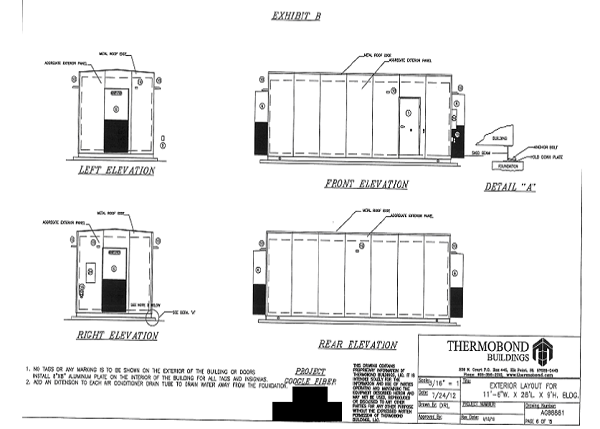In the previous blog post we discussed Checklist Item #1 – Information about existing infrastructure. This post covers Checklist Items #2 – Ensuring access to existing infrastructure and #3 – Helping make construction speedy and predictable. All three items are required to be filed by the City of Charlotte to Google no later than midnight PT May 1.
Helping to ensure access to existing infrastructure.
The request from Google is for “clear, predictable rules, and reasonable terms” to attach fiber to any city-owned utility poles, ducts, and conduit within the public right-of-way. The City of Charlotte is asked to provide a description of any “state laws, local ordinances, and/or commercial agreements” that satisfy this request. Google further asks that the city work with them to ensure access to these rights.
An example Google provides for a Municipal Ordinance that helps ensure access is this one from Anacortes, WA:
“A franchisee erecting or maintaining poles shall allow anyone constructing under the authority of this chapter and the city, joint use of its poles upon payment of a reasonable proportion of the cost of such poles installed and shall obey any order issued by the city’s director of public works relative to the joint use of poles.” Title 5, Ch. 5.44, § 5.44.190(D)
Helping to make construction speedy and predictable.
The third part of the Charlotte Checklist focuses on how the city's existing permitting and construction process aligns with the speed and the size of the Google Fiber project. Google provided a Permitting, Construction, and Maintenance Plan and asked the City of Charlotte review it and identify areas that may differ. For areas that differ Charlotte is asked to explain why and to outline ideas on how to accommodate a network build of this size in an accelerated manner. Charlotte is also asked to submit the existing permit application, and to identify any “construction constraints' that could impact the deployment time line.
Google provided their ideal construction plan for the project broken down into sections on the Permitting Process, the Construction Process, and Maintenance.
A partial list of Google's Permitting Process:
Permit applications and responses will be transmitted electronically
For underground construction Google wants to submit a plan view only
Google's permit applications include the applicable area will have at least 180 days to complete installation. Ideally Google would like the applicable area to be as large as possible, potentially even covering the entire city. The minimum area cover should be 20,000 households or 300 route miles of underground installation.
A permit application response time from the city of no more than 10 days. If not approved Google would like a detailed list of alterations needed to get the permit approved.
A partial list of Google's Construction Process:
Google Fiber will implement the city's standard traffic control plan during installation
Underground construction may include micro-trench, plow, open trench, directional bore and pneumatic bore.
Separation distances from existing facilities are specified as 24 inch horizontal separation, 12 inch vertical separation, and 24 inches deep.
Standard are provided for asphalt and concrete cutting, restoration, and replacement.
Google's Maintenance Plan includes:
48 hours electronic notice to the Right-of-way operator's maintenance department before commencing planned work.
Service wire drops to the home are considered a maintenance activity.
The City of Charlotte is also asked for a “Construction Constraints List”. This identifies rules and regulations that might impact the time line of construction. This includes any rules such as time of year certain construction work can take place, tree-trimming regulations, historical site regulations, landscaping and environmental factors, etc.
Lastly Google will need to deploy “network huts”. These will be dispersed throughout Charlotte and Google requests that they be placed on city-owned sites. A Network Hut License Agreement was provided to the city for review. The specific location of the huts will be jointly determined between Google and the city during the network design process.
The due date for the City of Charlotte to submit the checklist is midnight PT on May 1, 2014.







